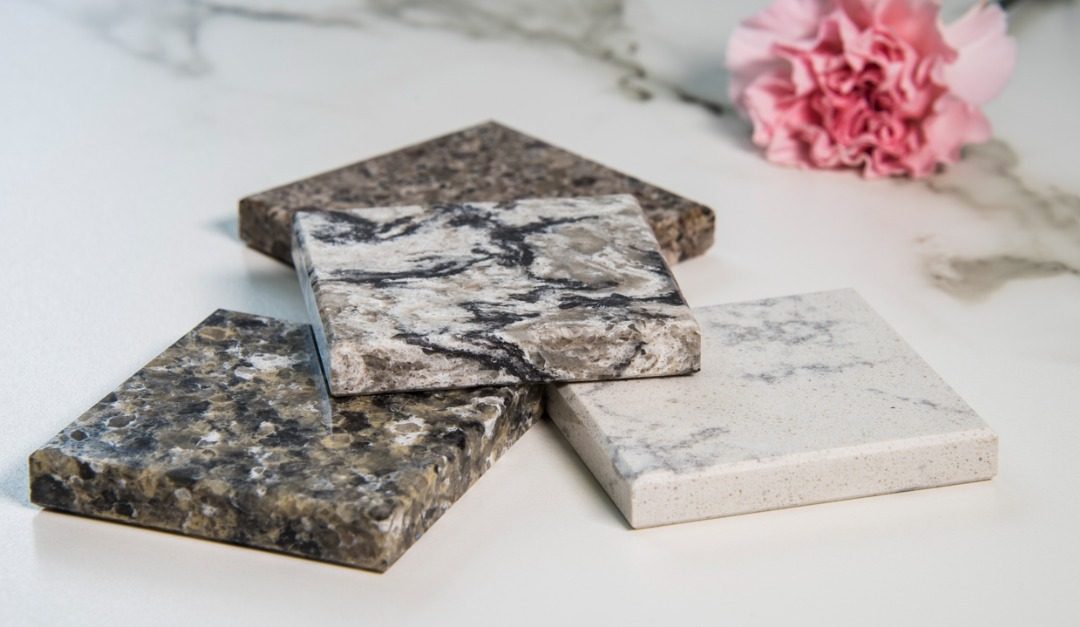With so many kitchen counter options to choose from—many of which look similar—selecting the best one for your home can be an overwhelming decision. Each option has its pros and cons, but ultimately the decision comes down to your lifestyle and the design aesthetic you want to achieve. Here are some of the most common kitchen counter options and what makes each material unique.
Marble
Because it’s a natural stone, no two marble countertops are alike. Due to its cost per square foot, marble is a luxury choice, but it will also last indefinitely with the proper care. Marble will develop patina and scratches over time, but that is also part of its charm.
While marble is an elegant material with unique veining in every slab, it is porous and you must seal it regularly to prevent staining.
Granite
Before quartz became a popular choice, granite has long been the kitchen counter material for high-end kitchens, but in recent years, the cost has decreased due to the prevalence of quartz. Granite can withstand high temperatures and is known for its durability and vast assortment of color choices. In addition, if granite is sealed correctly, it requires very little maintenance. This material is typically available in darker colors—white granite can be difficult to find and these slabs can often have imperfections.
Quartz
Quartz has become a popular choice for kitchen renovations in recent years. Unlike other kitchen counter options, quartz is an engineered stone made of both quartz and other minerals and resins. Quartz is available in a wide variety of colors and often mimics the appearance of marble. Since it’s not a natural stone, it doesn’t require sealing and it is non-porous, so it will resist permanent stains.
Wood
Warm wood countertops bring warmth and elegance to a kitchen. Whether you use it on an island or pair it with marble, wood counters, sometimes known as butcher block, add richness to any kitchen. The most common hardwoods to use are maple and oak. Butcher block counters are easy to clean and can last long if they are cared for correctly. However, they can be easily scratched, cut and are prone to water damage and bacteria if they are not sanded and resealed regularly.
Soapstone
If you appreciate a stone with a patina, soapstone is another natural great choice. It’s a dark gray stone that is smooth to the touch and will darken over time. Soapstone is seen in both historic homes, and due to new popularity, in modern homes as well. Its patina, over time, results in an elegant, historical look. Soapstone can be stain resistant and its damage can be sanded out. However, soapstone does require regular maintenance by rubbing mineral oil across the source and is prone to scratches and dents.
Concrete
To create a truly unique kitchen, consider concrete countertops. Because of their weight, concrete countertops are typically cast right in the kitchen. Different from concrete sidewalks, concrete counters are highly polished and can be color tinted. In addition, concrete counters are heat and scratch-resistant, but must be sealed regularly to prevent staining.
Quartzite
Not to be confused with quartz, quartzite is a natural stone that is the ultimate in luxury counters. Quartzite is harder than granite, appears like marble, has rich, beautiful veining, is durable, stain and scratch-resistant, and is almost maintenance-free.
With many high-end kitchen countertop selections available, the way you use your kitchen and the aesthetic you want to achieve will ultimately determine the best material for your own space. Whether it’s a natural material like quartzite and marble, or engineered like quartz, each material can be incorporated into a kitchen design to create a unique, beautiful space.




